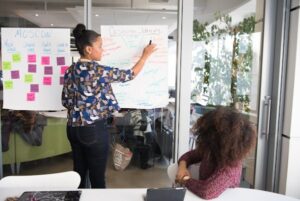
Neurodivergent Workers Are Your Most Untapped Resource – Why Haven’t You Noticed?
Neurodivergent Workers Are Your Most Untapped Resource – Why haven’t you noticed the incredible value that neurodivergent employees can bring.
Join our mailing list today and stay ahead with the latest insights on diversity and inclusion – unlock your team’s true potential!

Neurodivergent Workers Are Your Most Untapped Resource – Why haven’t you noticed the incredible value that neurodivergent employees can bring.

Sensory overload is a real and most workplaces aren’t designed to accommodate the sensory needs of neurodivergent employees.

The conversation around diversity and inclusion has never been more important. Businesses are making great efforts to embrace different genders, cultures, and backgrounds. But there’s one big topic that often

The unique abilities and perspectives that autistic individuals bring to the table could be exactly what your business needs to thrive.

Many organisations are missing out on something really important: diversity of thought. And this is especially true when it comes to neurodivergent talent

For many women with Attention Deficit Hyperactivity Disorder (ADHD), the journey to a diagnosis is long, frustrating, and often filled with confusion. Unlike boys, who are more frequently diagnosed in childhood, women with ADHD often go undetected for years, quietly struggling with symptoms that they work hard to conceal. This process of “masking” – hiding or suppressing symptoms to fit societal expectations – can be exhausting and lead to significant emotional and psychological strain.

People with ADHD often face unique challenges, especially around managing focus and avoiding distractions. But with a few thoughtful design tweaks, you can create a work environment that’s comfortable, productive, and supportive.

When a crisis hits, businesses often scramble to adapt, solve problems, and figure out new ways to keep moving forward. Whether it’s a pandemic, an economic downturn, or a sudden industry shake-up, being able to think creatively and quickly is key to survival. While many companies stick with traditional approaches, there’s a hidden strength within their teams they may be overlooking: neurodivergent employees.

Too often, neurodivergent employees are seen as needing to be “fixed” or managed with kid gloves. Spoiler alert: they don’t.

From creative problem-solving to meticulous attention to detail, their contributions can transform teams and organisations. But is your workplace equipped to support and nurture these unique talents?

As a passionate advocate for inclusive design in the workplace, I’ve seen firsthand how the thoughtful use of colour can transform the reading experience for individuals with dyslexia. Colour choice is not merely an aesthetic decision; it plays a critical role in helping or hindering readability.

As the corporate world increasingly recognises the value of neurodiversity in the workplace, many Human Resources professionals find themselves facing new challenges in the interview process. We know neurodivergent candidates can bring unique perspectives and exceptional skills to an organisation, but traditional interview methods can unintentionally screen out this valuable talent pool.

Encouraging an inclusive environment that supports neurodiverse individuals is essential for maximising team potential. Among the various forms of neurodiversity, dyslexia is one of the most common learning differences. Affecting the way people process language, dyslexia can pose challenges in a traditional workplace setting, but with the right tools and resources, employees with dyslexia can thrive. Modern technological solutions have made it easier than ever for organisations to empower their dyslexic employees, ensuring they feel supported and valued.

Neurodiverse conditions, including Autism Spectrum Disorder (ASD), Attention Deficit Hyperactivity Disorder (ADHD), dyslexia, dyspraxia, and others, represent at least 20% of the population.

Autism and anxiety often intersect in the workplace, creating unique challenges for autistic employees. Understanding this relationship and implementing effective strategies can enhance workplace inclusivity and productivity.

In my corporate journey and experience as a trainer in neurodiversity, I’ve discovered that often, the smallest changes in document design can significantly enhance readability and accessibility- especially for those with dyslexia. So I’d like to share some tips on how to format your documents to be more accessible.

Diverse teams are proving to be game changers, spurring innovation, improving decision-making, and eventually smashing the competition. If your organisation is not leveraging the power of diversity, you might be missing out on big benefits. Here’s how diverse teams are setting the standard and why you should value diversity in the workplace.

Efficiency and streamlined processes are critical to success. Businesses continually look for ways to enhance productivity, reduce waste, and improve overall performance. One often overlooked yet highly valuable resource in achieving these goals is the unique skill set of autistic team members.

Diversity, Equity, and Inclusion (DEI) training has become an essential tool for cultivating an inclusive environment. DEI training is not just about promoting diversity; it’s about challenging existing views and

Building a diverse and inclusive workplace isn’t just about the moral case, it’s about strategic advantage. In the field of diversity, neurodiversity—recognising and valuing differences in cognitive functioning—has emerged as

Unconscious bias, a common issue in many workplaces, can significantly impact the experiences and opportunities of neurodivergent employees. Recognising and addressing these biases is crucial for creating an inclusive environment where all team members can thrive. This article explores the nature of unconscious bias against neurodivergent employees and offers strategies for addressing its effects.